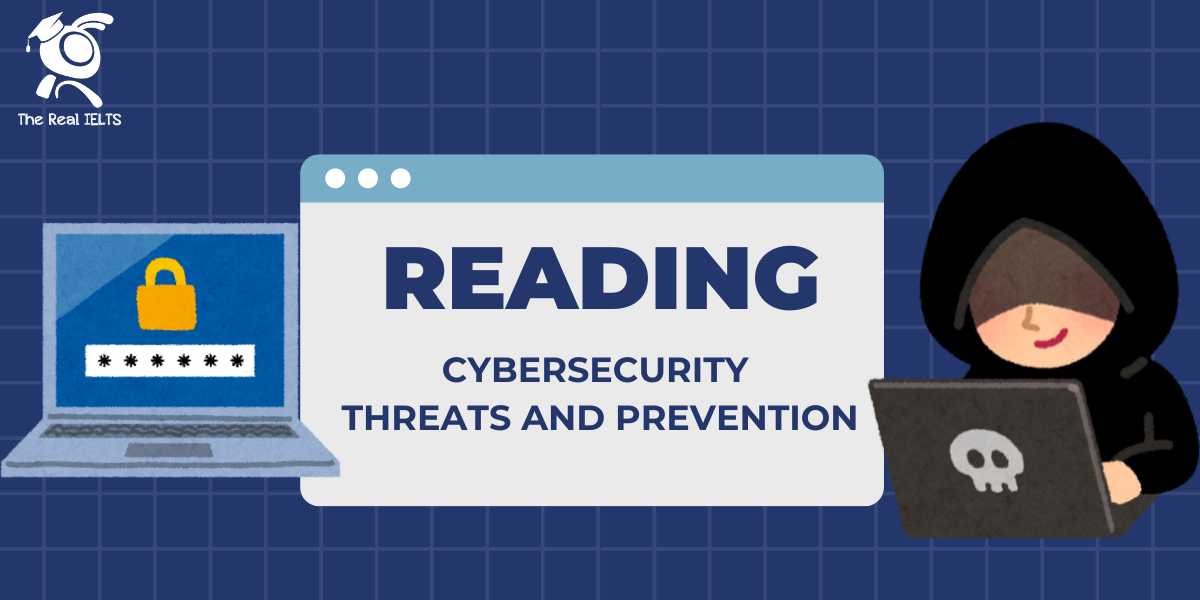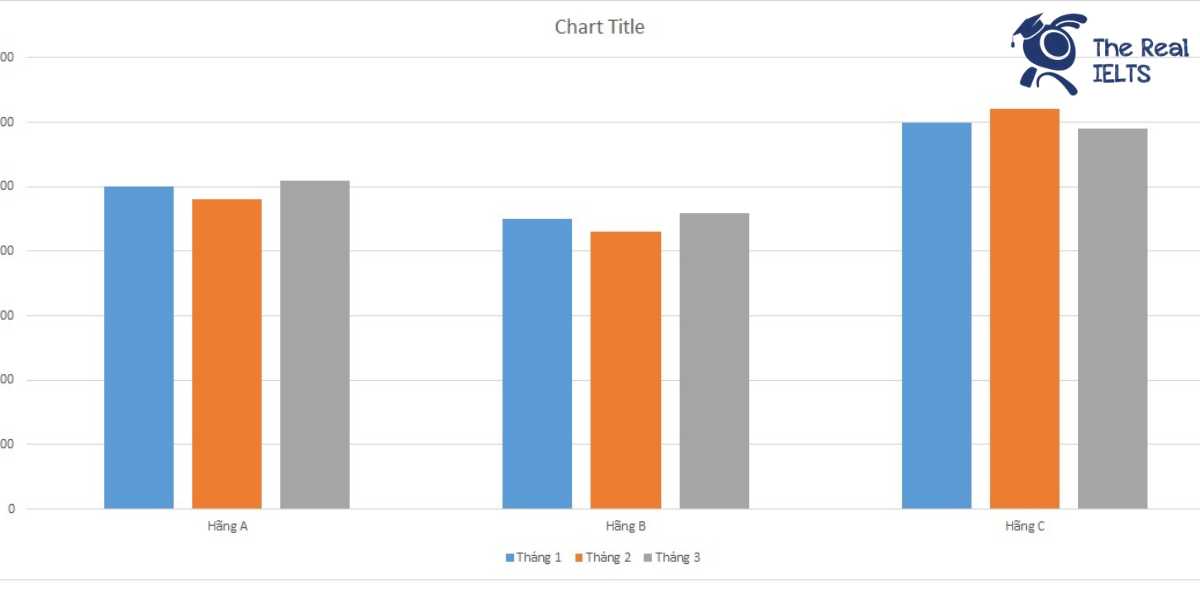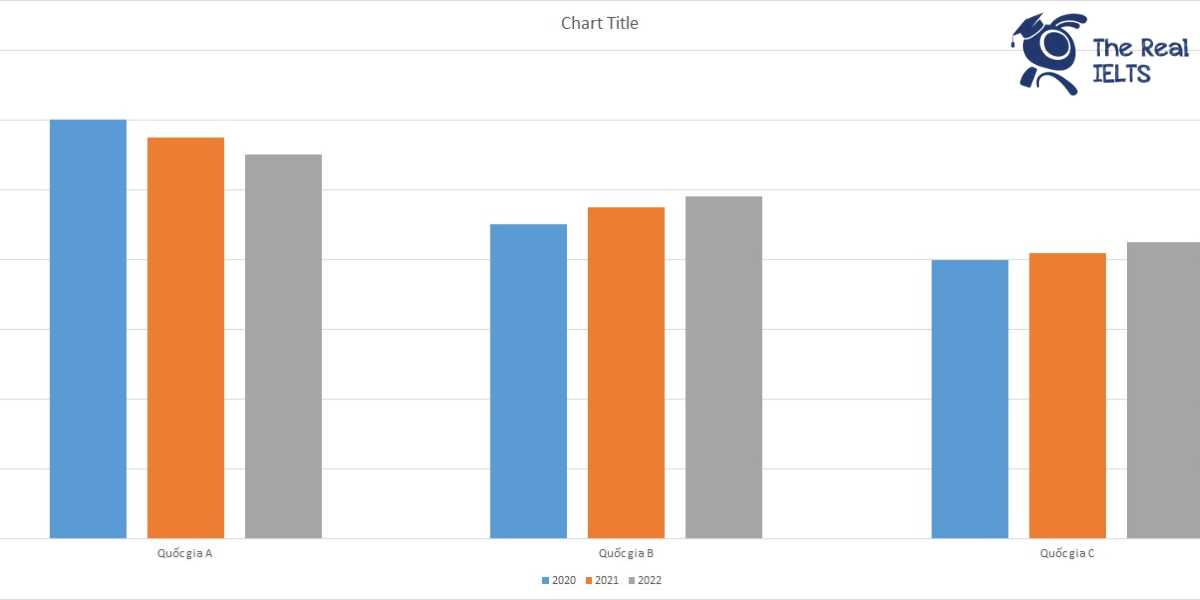Bài Reading này có chủ đề: “Các mối đe dọa an ninh mạng và biện pháp phòng ngừa”. Các bài Reading thường sẽ không có phần ghi âm hay luyện nghe luyện nói gì, nhưng đòi hỏi sự tập trung trong quá trình đọc bài viết. Các bạn hãy đọc kỹ bài đọc và trả lời câu hỏi sao cho đúng.
Reading Passage for IELTS Practice: “Cybersecurity Threats and Prevention”
Cybersecurity Threats and Prevention
In the modern digital age, cybersecurity has become a paramount concern for individuals, businesses, and governments alike. As technology continues to advance, so do the methods employed by cybercriminals. Understanding the various types of cybersecurity threats and the strategies for prevention is crucial for protecting sensitive information and maintaining the integrity of digital systems.
One of the most common forms of cybersecurity threats is phishing. Phishing attacks typically involve the use of deceptive emails or websites to trick individuals into providing personal information such as usernames, passwords, or credit card details. These attacks often appear legitimate, making them difficult to detect without proper training and awareness. Another prevalent threat is malware, which includes viruses, worms, and ransomware. Malware can infiltrate systems through various means, including email attachments, software downloads, and compromised websites. Once inside, malware can cause significant damage, such as stealing data, disrupting operations, or encrypting files and demanding ransom payments.
Advanced Persistent Threats (APTs) represent a more sophisticated form of cyberattack. APTs are prolonged and targeted attacks in which an intruder gains access to a network and remains undetected for an extended period. These attacks are usually aimed at large organizations or nation-states and can lead to substantial data breaches and loss of sensitive information. Similarly, Distributed Denial-of-Service (DDoS) attacks aim to disrupt the normal traffic of a targeted server, service, or network by overwhelming it with a flood of Internet traffic. DDoS attacks can render websites and online services unavailable, causing significant downtime and financial losses.
To counter these threats, several preventive measures can be adopted. One fundamental strategy is to implement strong password policies, encouraging the use of complex and unique passwords for different accounts. Additionally, multi-factor authentication (MFA) adds an extra layer of security by requiring users to provide two or more verification factors to gain access to a resource. Regular software updates and patches are also critical, as they address vulnerabilities that cybercriminals could exploit.
Moreover, cybersecurity awareness training is essential for all users to recognize and respond appropriately to potential threats. Organizations should conduct regular training sessions to educate employees about the latest phishing tactics, safe browsing practices, and the importance of reporting suspicious activities. Utilizing advanced security technologies, such as firewalls, intrusion detection systems (IDS), and endpoint protection platforms, can further enhance an organization’s defense against cyber threats.
Finally, developing and implementing an incident response plan ensures that, in the event of a cybersecurity breach, there are predefined procedures to mitigate damage and recover systems promptly. This plan should include steps for identifying the breach, containing the threat, eradicating the cause, and restoring affected systems. Regular drills and updates to the incident response plan can help organizations stay prepared for potential cyber incidents.
In conclusion, as cyber threats continue to evolve, staying informed and proactive in cybersecurity practices is vital. By understanding the nature of these threats and implementing comprehensive prevention strategies, individuals and organizations can better protect themselves against cyberattacks and ensure the security of their digital assets.
Questions:
1. Multiple Choice Questions
1.1. What is phishing primarily aimed at? a) Disrupting network traffic b) Gaining unauthorized access to personal information c) Encrypting files for ransom d) Installing malware on devices
1.2. Which of the following is a characteristic of Advanced Persistent Threats (APTs)? a) They are short-term attacks. b) They are easily detectable. c) They target large organizations or nation-states. d) They primarily involve phishing emails.
1.3. What is the purpose of a Distributed Denial-of-Service (DDoS) attack? a) To steal personal information b) To disrupt the normal traffic of a targeted server c) To encrypt files and demand ransom d) To install malicious software
2. True/False Questions
2.1. Malware can only infiltrate systems through email attachments. (True/False)
2.2. Multi-factor authentication (MFA) adds an extra layer of security by requiring only a username and password. (True/False)
2.3. An incident response plan should include steps for identifying, containing, eradicating, and restoring systems after a breach. (True/False)
3. Short Answer Questions
3.1. What are two methods mentioned in the passage for preventing phishing attacks?
3.2. Name one advanced security technology that can enhance an organization’s defense against cyber threats.
3.3. Why is regular cybersecurity awareness training important for organizations?
4. Summary Completion
Complete the summary using words from the passage.
Cybersecurity is crucial in the digital age due to the evolving nature of _____________. Common threats include phishing, malware, APTs, and DDoS attacks. Preventive measures such as strong passwords, ____________, and regular software updates can help protect against these threats. Additionally, ____________ training and advanced security technologies play a vital role in enhancing cybersecurity. An incident response plan ensures that organizations can promptly _____________ and recover from breaches.
Answer Key:
1. Multiple Choice Questions
1.1. b) Gaining unauthorized access to personal information
1.2. c) They target large organizations or nation-states.
1.3. b) To disrupt the normal traffic of a targeted server
2. True/False Questions
2.1. False
2.2. False
2.3. True
3. Short Answer Questions
3.1. Implementing strong password policies and multi-factor authentication (MFA).
3.2. Firewalls or intrusion detection systems (IDS) or endpoint protection platforms.
3.3. It helps users recognize and respond appropriately to potential threats.
4. Summary Completion
Cybersecurity is crucial in the digital age due to the evolving nature of cyber threats. Common threats include phishing, malware, APTs, and DDoS attacks. Preventive measures such as strong passwords, multi-factor authentication (MFA), and regular software updates can help protect against these threats. Additionally, cybersecurity awareness training and advanced security technologies play a vital role in enhancing cybersecurity. An incident response plan ensures that organizations can promptly mitigate damage and recover from breaches.
Đọc lại bài cũ: Reading Skill Part 14: The Role of Women in Leadership.














